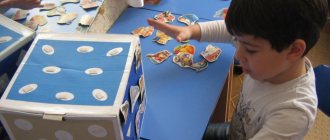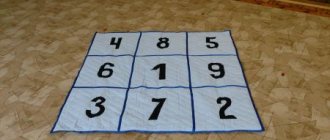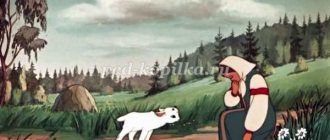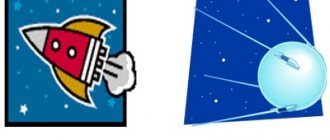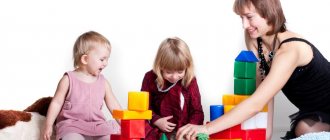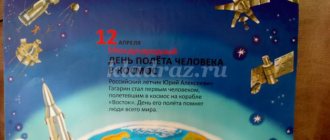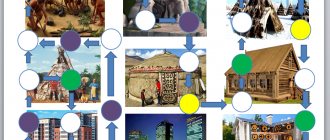LiveInternetLiveInternet
Flashcards - Trees
Dear Teachers!
I offer you didactic material for classes. Let's pose the children with different trees.
Print out sheets of trees, their leaves, seeds, and a brief description of each tree. Each tree comes with pictures of leaves that can be colored. Teach children to remember what twigs, leaves and fruits look like.
I also offer you a sample of composing a short story about a birch (by analogy, you can compose the same stories about other trees) and several riddles about trees (read below).
In a brief description of each tree, you can find out their features, what they look like, where they grow, age, and interesting facts about the tree.
A story about Birch:
This is a birch tree. She has a white, thin, slender trunk. The branches have round leaves. The birch tree feeds with the help of its roots. Birch is a large deciduous tree. Most often it grows in the forest. In the city, people plant birch trees to make the air clean. Various crafts are made from birch bark. In spring, buds appear on the birch tree and turn into leaves. The birch tree remains green all summer. In autumn the leaves turn yellow and fall off. In winter, bare branches are covered with snow.
Questions about Tree:
What trees do you know?
Are trees different from shrubs? How?
Are trees living or non-living?
Who (or what) helps them grow?
What should I water them with: water or milk?
(Show pictures of trees) What is the name of this tree? How big is it? Where does it most often grow?
What parts does it consist of?
How can it benefit people?
How does it change at different times of the year?
What can be made from this tree?
Why do people plant trees on city streets?
What are trees for, benefits of trees:
Trees purify and humidify the air, create coolness, and some produce delicious edible fruits.
Sawn wood is a building material: dried trunks are used to make boards, plywood, furniture, toys, and paper.
Trees grow slowly, so they need to be protected.
We need to protect the trees, take care of them, sometimes talk to them kindly, and in the spring, plant young trees together with our parents.
Tasks in which you need to write the names of trees by guessing their leaves.
TREE STRUCTURE - a tree with a clearly defined trunk, lateral branches and apical shoot. The components of a tree are the crown, trunk and roots.
Riddles about Trees: *** It makes you happy in the spring, it cools you in the summer, it nourishes you in the fall, it warms you in winter. (Tree) *** Like pine trees, like fir trees, And in winter without needles. (Larch) *** She turned green in the spring, tanned in the summer, and wore red corals in the fall. (Rowan) *** A Russian beauty is standing in a clearing, wearing a green blouse and a white sundress. (Birch) *** She lowered her curls into the river And became sad about something, And what she is sad about, She doesn’t tell anyone. (Willow) *** You will find her in the forest, Let's go for a walk and meet her. Stands prickly, like a hedgehog, In winter in a summer dress. (Spruce) *** In summer - snow! Just laughter! Snow is flying around the city, why doesn't it melt? (Pople fluff) *** No one is scared, but everyone is trembling. (Aspen)
On the topic: methodological developments, presentations and notes
Game “Which tree is the leaf from?”
Purpose of the game: distinguish and name the leaves of familiar trees, remember the names of the trees. Pictures of trees and leaves….
“Which tree is the leaf from?” Environmental project for secondary group No. 7 “Rainbow”
Purpose of the project: to study the leaves of trees. Objectives: 1. introduce children to trees, draw children’s attention to the shape of the leaves and their color; 2. Form ideas: trees are living beings, they have...
TSVETKOVA ALENA ALEKSANDROVNA
Purpose of the game: to teach children to distinguish trees by foliage
;
know what trees
.
Tasks :
Introduce trees to children - tell
as they are called, pay attention to the shape
of the leaves
;
Classify trees - coniferous or deciduous
;
Form ideas: trees are living beings
, they have a need for certain conditions: warmth, light, water, nutritious soil;
In modern conditions, when profound changes are taking place in the life of society, patriotic education is becoming one of the central areas of work with the younger generation. Now, during the development of the young republic, there is a need to return to the best traditions of our people, to its age-old roots, to such eternal concepts as clan, kinship, and Motherland.
The feeling of patriotism is multifaceted in its content: it is love for one’s native places, pride in one’s people, a feeling of inseparability with others, and a desire to preserve and increase the wealth of one’s country.
Moral and patriotic education of children is one of the main tasks of a preschool educational institution. A child’s sense of homeland begins with his relationship to his family, to the closest people - mother, father, grandmother, grandfather. These are the roots that connect him with his home and immediate environment. The feeling of the Motherland begins with admiration for what the child sees in front of him, what he is amazed at and what evokes a response in his soul... And although many impressions are not yet deeply realized by him, but, passed through the child’s perception, they play a huge role in the formation of the personality of a patriot.
Goal: to clarify children’s ideas about themselves, about family members: first names, patronymics and last names; family relationships.
Game "Who's in charge?"
Help children remember and name their family
;
bring to the understanding that both children and adults are the most important in the world; cultivate love and respect for your family
.
Material: "Family Tree"
; illustrations depicting what mom, dad, grandma, grandpa, and child are doing.
Progress of the game
The teacher invites the children to take turns naming their family members and
: who does what, who does what in
the family
.
If it is difficult for a child to say who does what in the family
, then illustrations will help him with this.
Children say who is the boss in the family
and why they think so. At the end of the game, it should be determined that everyone is important in the world - both children and adults.
Game “What are the names of family members”
Strengthen children's ability to clearly name their family
;
develop memory, coherence; cultivate love for your family
.
Children stand in a circle and take turns naming their family
. For example: “I live with my mother Natasha, father Sasha, brother Vladik. I have grandmother Lida, grandmother Vera, grandfather Grisha and grandfather Pavel.”
Game "Good and bad"
Q: Helping mom is good. Why?
Q: Arguing with your brother is bad. Why?
That is, questions are asked according to the principle: “something is good - why?”, “something is bad - why?”
Game
“Let's change”
Form ideas about family
.
Game rule: The game is played by a subgroup
.
Each child thinks of his own object and says what he (she)
can do. Then there is an exchange of functions between the children who have guessed the object.
Progress of the game
P1 - morning. In the morning, everyone wakes up, washes their face, and gets ready for work, school, or kindergarten.
P2 - day. During the day, adults work, children study at school, and in kindergarten children walk, study, play and sleep.
P3 - evening. In the evening the whole family gathers at home
, have dinner, children study homework, adults watch TV, and very young children play.
P4 - night. They sleep at night. The night is needed so that adults and children can rest and gain strength for the next day.
Q: Now imagine that at night the whole family
wakes up and starts getting ready for work and so on.
Game "Family" -
developing children's concepts of family.
Guys, an unusual guest will come to us today. He lived on the moon completely alone, and he was very sad that he had no family
. Have you already guessed who it is?
Educator:
- Let's call him! (Luntik, Luntik)
Luntik:
- Hello guys! I'm very glad to see you all! I recently arrived on earth, and here I made many friends. Now I live with them in a fairyland. Who do you guys live with?
(children's answers)
Educator:
- What do you call it, in one word?
Luntik:
-What is family
?
Educator:
— Guys, let’s show Luntik what family
?
Finger game “Family” (children imitate movements)
.
This finger is grandpa
This finger is grandma
This finger is mommy
This finger is daddy
This finger is me
That's my whole family
. Now arrange your family members on our “family tree”
Game "Make a Family"
Form the idea of children that they have the right to a family
, as about people who love each other and care about each other.
Equipment: dolls - family
Progress of the game
- Guys, look at these dolls. Who do you see?
— How can you call them all in one word ( family
)
- Name your family
.
— Family
may be big or small.
In every family, children look
like their parents or grandparents.
People of different ages can live
in the same family And now, you need to arrange the relatives of the boy (girl)
like this:
The first is grandfather, after grandfather is dad, before dad is grandmother, after dad is mom, between mom and dad is a boy (girl)
. Count how many there are? Tell me, who is behind whom?
